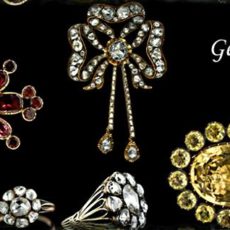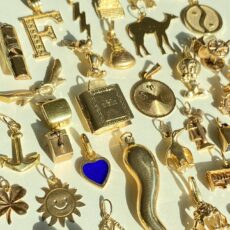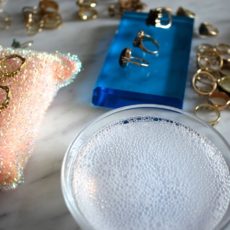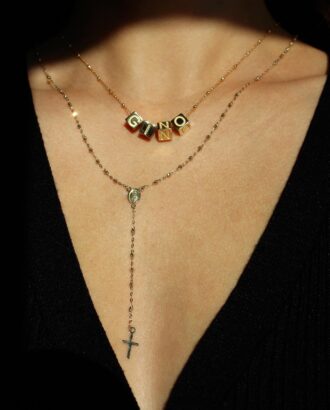
King Edward VII took the throne, which began the Edwardian Period in 1901 and lasted until around 1915, around the start of the first World War. During this time, fashion and opulence were the forefront of society. Women were as feminine as possible, outfitted with delicate layers of feathers, bows, lace and silk. Queen Alexandra was iconic. She often wore many strands of pearls and other necklaces all layered together, as illustrated in the picture below. Progress made in gem cutting made triangles, baguettes and trapeze shapes new and interesting. This time in history marked England as a global, dominant force, with the rich living in extravagance.
The start of World War I made for a quick end to this lavish era of a carefree spirit. Precious metals became scarce, while many people hid away their jewels in vaults or had to sell them.
Some motifs and distinctive elements of this time period:
- overuse of platinum; platinum and diamonds
- jewelry imitated lace; “lace translated into platinum and diamonds”
- milgraining
- négligée pendants- two drops of unequal length
- sautoir necklaces- long necklaces usually composed of pearls, with tassels on ends
- stars, ribbons, bows, garlands
- dog collar style choker necklaces
- jewels for hair
- Peridot was considered the “good luck stone” as popularized by King Edward
- bar pins
Important People of the Time:
- Queen Alexandra








TheTinaTangCrew March 3, 2009 at 5:34 pm:
Great post! This is always been one of our favorite eras for jewelry. Just feel that they have a bit more of a modern edge compared to Victorian-style jewelry.
btw, we are on facebook too. Feel free to add us. 🙂
Carmen March 18, 2009 at 3:45 pm:
I found the article very interesting regarding the types of jewelry that was popular during this era. I have always loved the chokers and the long pearl necklaces with the tassle at the end of the stands.